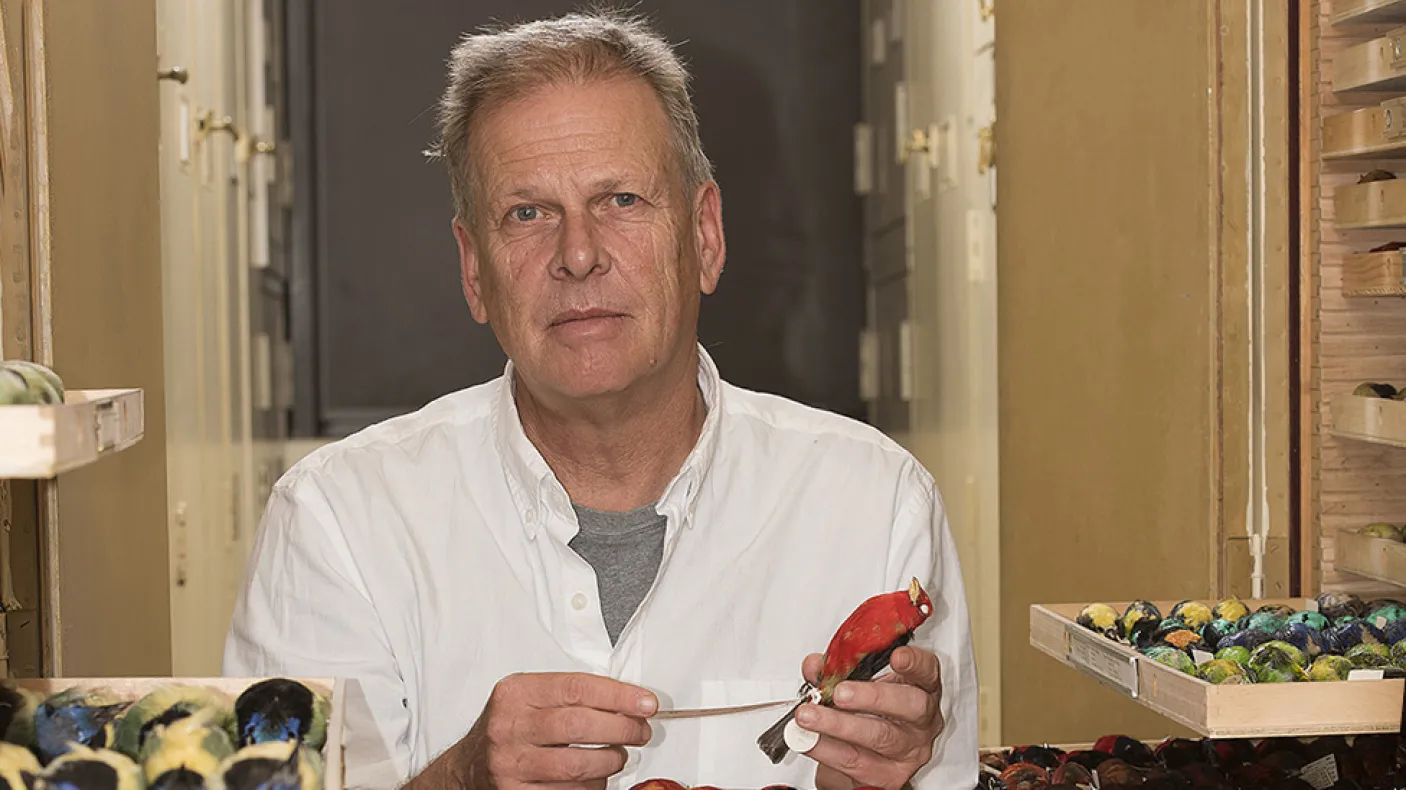Ask ROM Anything: Mark Peck
Category
Age
About
Every Thursday at 10 am on Instagram we chat with a different ROM expert ready to answer your burning questions on a different subject. This time on Ask ROM Anything we are talking about birds. Meet Mark Peck, he is the Manager of the Schad Gallery of Biodiversity and completely bird crazy.
He has been with the ROM for over 36 years helping with the bird collections, bird research and developing bird related programs, galleries, and exhibitions.
When he is not at work, Mark likes to photograph birds and volunteer for bird-related citizen science programs like eBird, Project Newswatch and iNaturalist. Told you he was bird crazy!
His favourite bird this year is the Common Loon. They should be migrating back into some of our Ontario lakes and rivers in a couple weeks.
Ask Mark Anything!
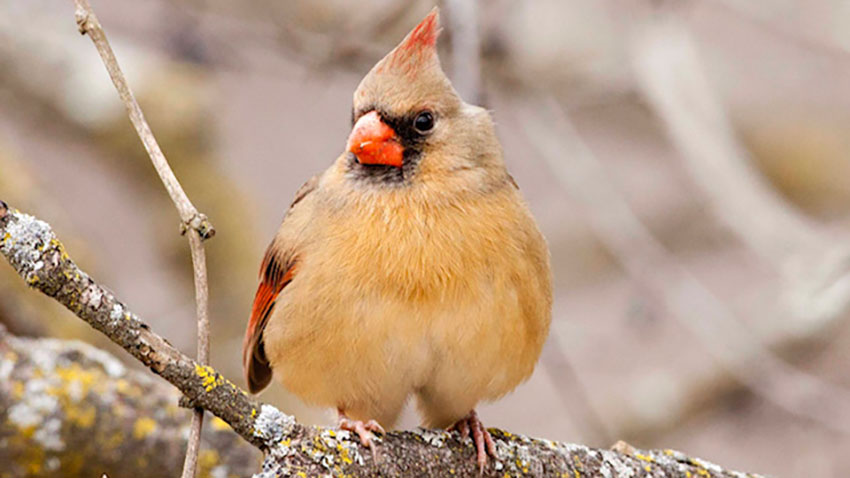
Q: Why is the sighting of a female cardinal rare than a male cardinal?
A: Males at this time of year are “showing off” establishing territories, advertising through their songs and visual appearance.
Females are busy building up energy for egg production and trying to remain hidden from potential predators. It can be a risky business being a male.
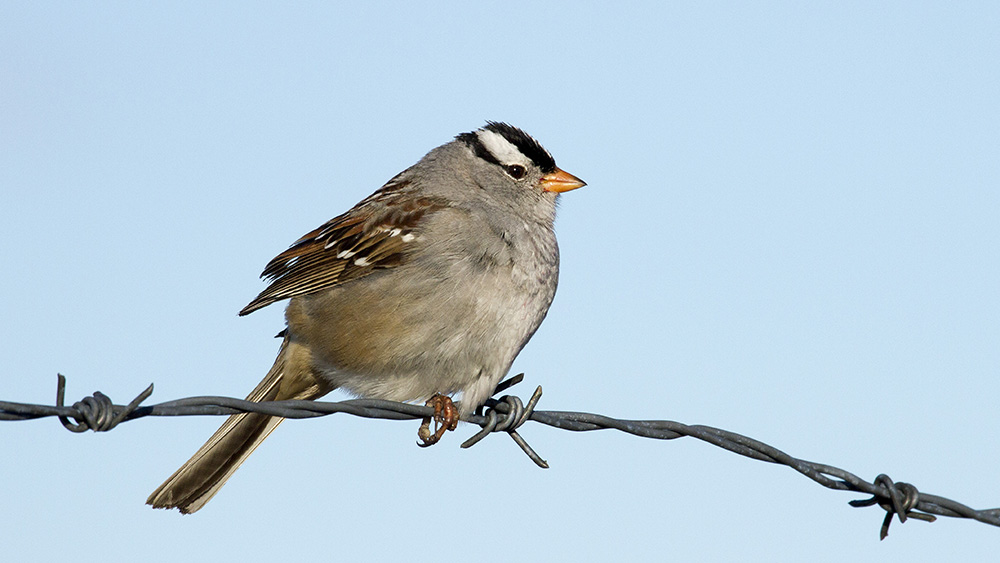
Q: Favourite field guides/books for beginner birders ? Thanks!
A: I would suggest going in a slightly different direction. Download an app called Merlin on your phone and/or iPad. It will help identify the bird or ask you a series of questions to help you identify the bird.
If you are looking for a book try and find a bird like Birds of Ontario or Birds of Eastern North America so you can minimize your search a little. There are a lot of bird species in Ontario, close to 500 have been documented so it can be a little overwhelming at first.

Q: Are ravens and crows both common to central Ontario?
A: The American Crow and Common Raven are both common to central Ontario and the raven is actually starting to move farther south in recent years.
West Nile Virus seemed to have to have a negative impact on the crow population in southern Ontario 20 years ago which may have allowed ravens access to new habitat in the south. They look similar but ravens are actually much bigger with a much more wedge-shaped tail.
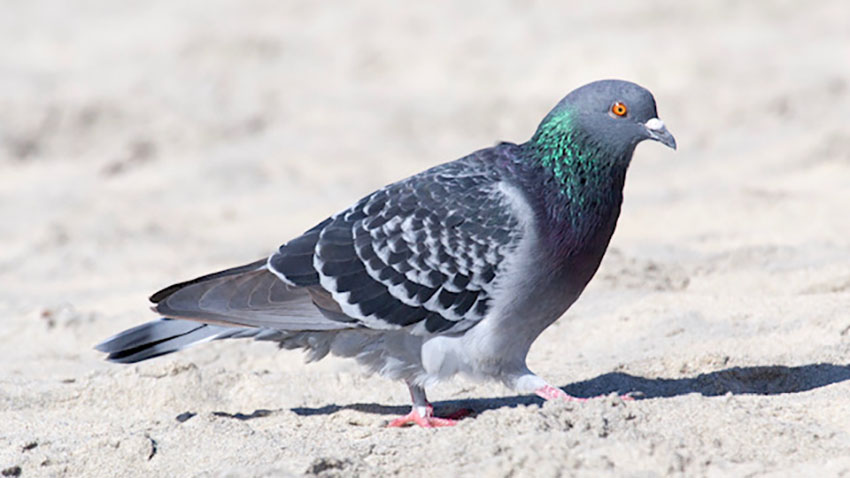
Q: Are there any positive qualities of pigeons? To me they are just dirty birds.
A: I guess that depends on who you ask. If you ask a pigeon for instance they would regale you with their accomplishments.
- They are a very successful group of birds with 175 different species found throughout much of the world. If we are talking only about the feral Rock Pigeon even they have many things to be proud of;
- -They were trained to fly messages back and forth during certain wars.
- -They also helped in discovering evolution. Check out the Origin of Species…pigeons feature prominently!
- They also provide food for other species in the city like Peregrine Falcons and Red-tailed Hawks.
- And, most importantly, they are part of our biodiversity and have as much value as any other species.
There is great beauty, even in the pigeon.
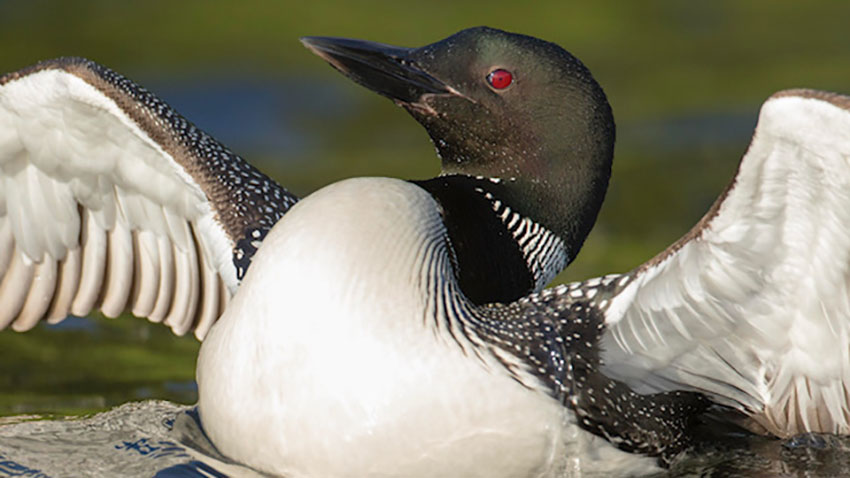
Q: What is the most interesting bird to you? Something that can be unique about them.
A: That on changes every couple years but right now I am fascinated by Common Loons.
I love their adaptations to living life in the water an their haunting calls never fail to stop me in my tracks.
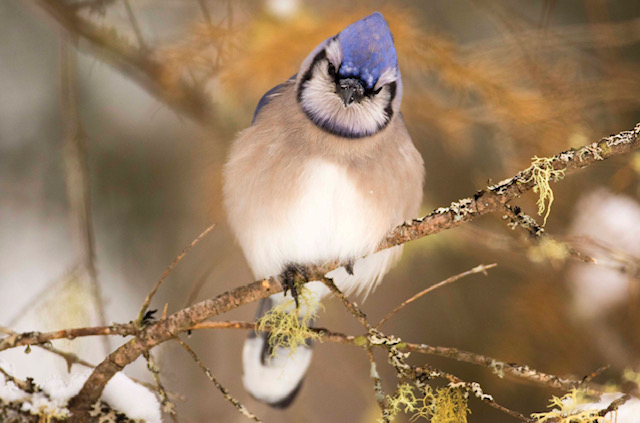
Q: Besides birds like raves and parrots what other birds display surprising intelligence?
A: The general consensus is the Corvid Family, not to be confused with COVID family are some of the most intelligent birds.
The Family includes the ravens, crows, jays and magpies. Even our local Blue Jay have earned the honour.
They are very resourceful finding a variety of food. Blue Jays will eat seeds, fruit as well as eggs and nestlings of other species.
They are able to imitate certain hawk species, hoarding food and can refined it and have been observed using tools in a laboratory setting.
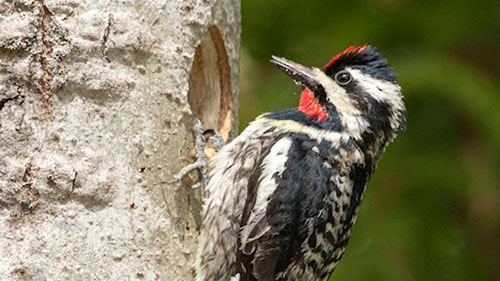
Q: Why do we only seem to hear woodpeckers in early spring—are they around in the summer?
A: Most of our woodpeckers in Ontario are with us all year long. The most obvious exceptions are the Northern Flicker and the Yellow-bellied Sapsucker. Both should be returning shortly.
Woodpeckers are more vocal in the spring and do more “drumming” to establish their territories and attract females. Birds do not advertise as much after the breeding season in May and June.
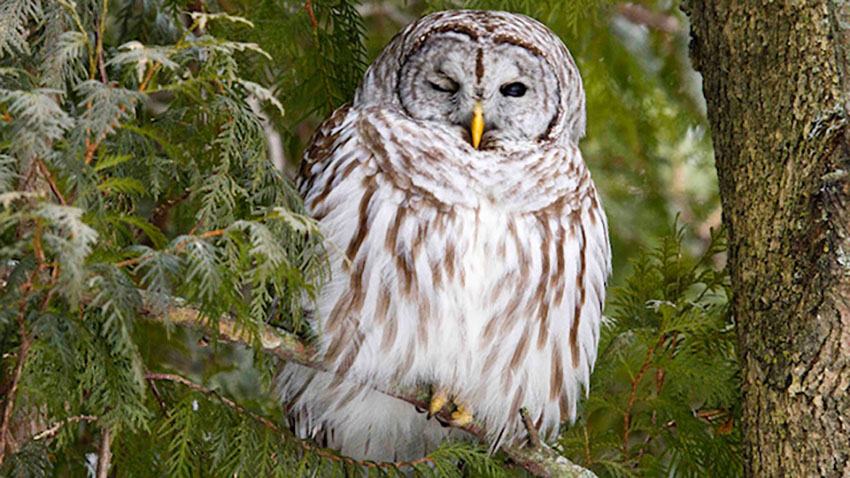
Q: What’s his (Mark’s) favourite raptor?
A: I would have to go with the Barred Owl.
Owls are so beautifully adapted to life at night. I love their calls and it is always a good day when I accidentally spot an owl sitting quietly in a tree or on a fence post.
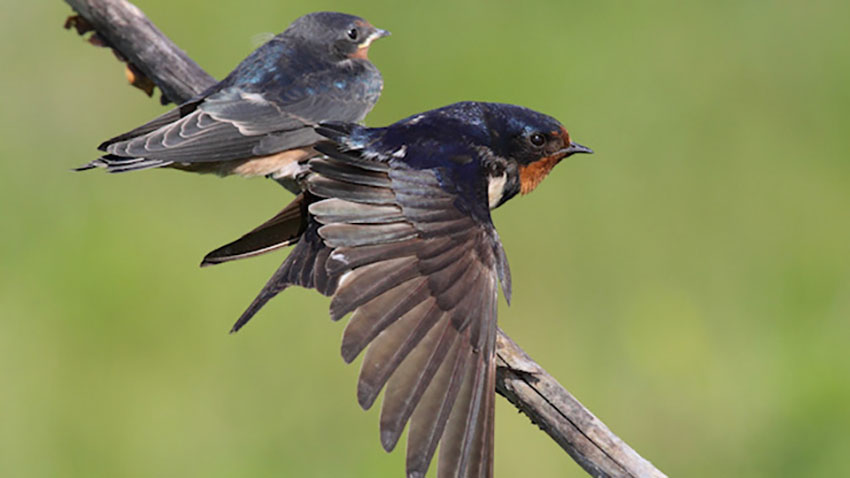
Q: What is the airspeed velocity of an unladen swallow?
A: Barn Swallows can travel as fast as 14 m per second or 50 km an hour.
During migration they can travel as far as 300 kms in a day.
Although birds during migration may double their weight with fat reserves so does that still count as unladen?
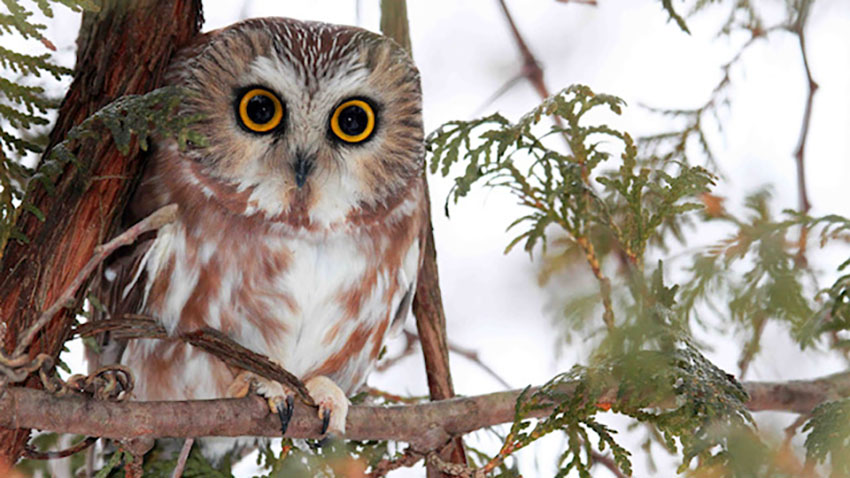
Q: Pre-emptive apologies. My 9 year old wants to know if birds toot?
A: Great question! But no, not to my knowledge.
However birds hoot, coo and make a bunch of other calls and songs. And, the call of the Northern Saw-whet Owl is often described as a series of sharp toots, so, maybe some birds do toot.
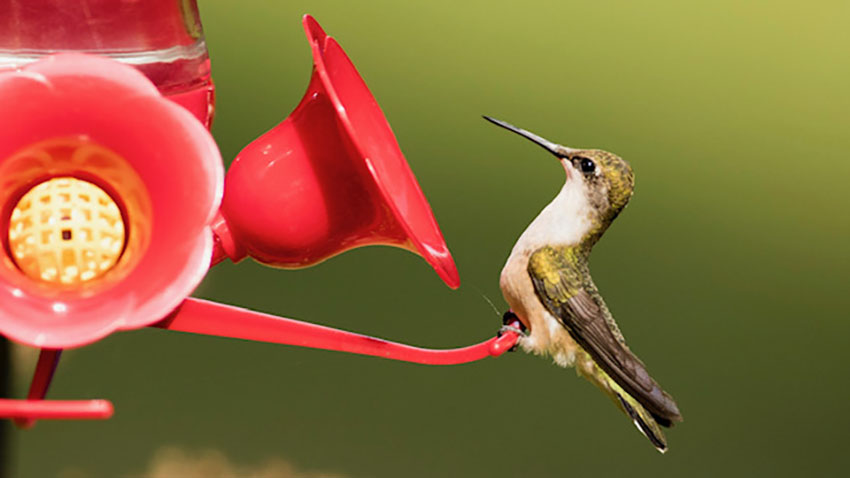
Q: Do you have a bird feeder setup at home? What is it like?
A: I have several feeders up at our cabin in the woods.
We have three squirrel proof feeders of black oil sunflower seeds for the jays, cardinals, chickadees and grosbeaks, and another feeder of nyger seeds for the finches, and a suet feeder for the woodpeckers and nuthatches.
I will be bringing them in shortly and replacing with a couple of hummingbird feeders for the summer. I also enter all of my feeder observations in a citizen science program called eBird.
“I think I spend too much time looking at the feeders sometimes”

Q: How does the ROM’s work tie in with the work of other researchers and institutions?
A:
- Our staff help support a number of organizations in Toronto, Ontario, Canada and around the world.
- Our international collection of birds is one of the finest and we willingly share and loan specimens to scientists and artists for research and reference material.
- We also provide program space in the ROM to support other environmental organizations and let them tell their stories in a busy cultural institution.
- Our curators are conducting high quality research and publish in both peer-reviewed and popular journals.
- We support citizen science programs like iNaturalist and eBird.

Q: Are we going to see an increase in urban nesting due to the reduced human activity this spring?
A: Interesting question. My guess is we will not see an increase in nesting but my hope is e will see an increase in nesting success.
Long-story short. Most birds attempt to nest each year in urban environments but are often unsuccessful due to disturbance from people of their pets.
With fewer people out in May and June this year (breeding season) I predict we may see a more successful breeding season in urban areas.
We should also see less roadkill, less cat kills and possibly window strikes.
“Fingers crossed. Mute swans and Canada Geese have already started nesting in the Toronto parks.”
